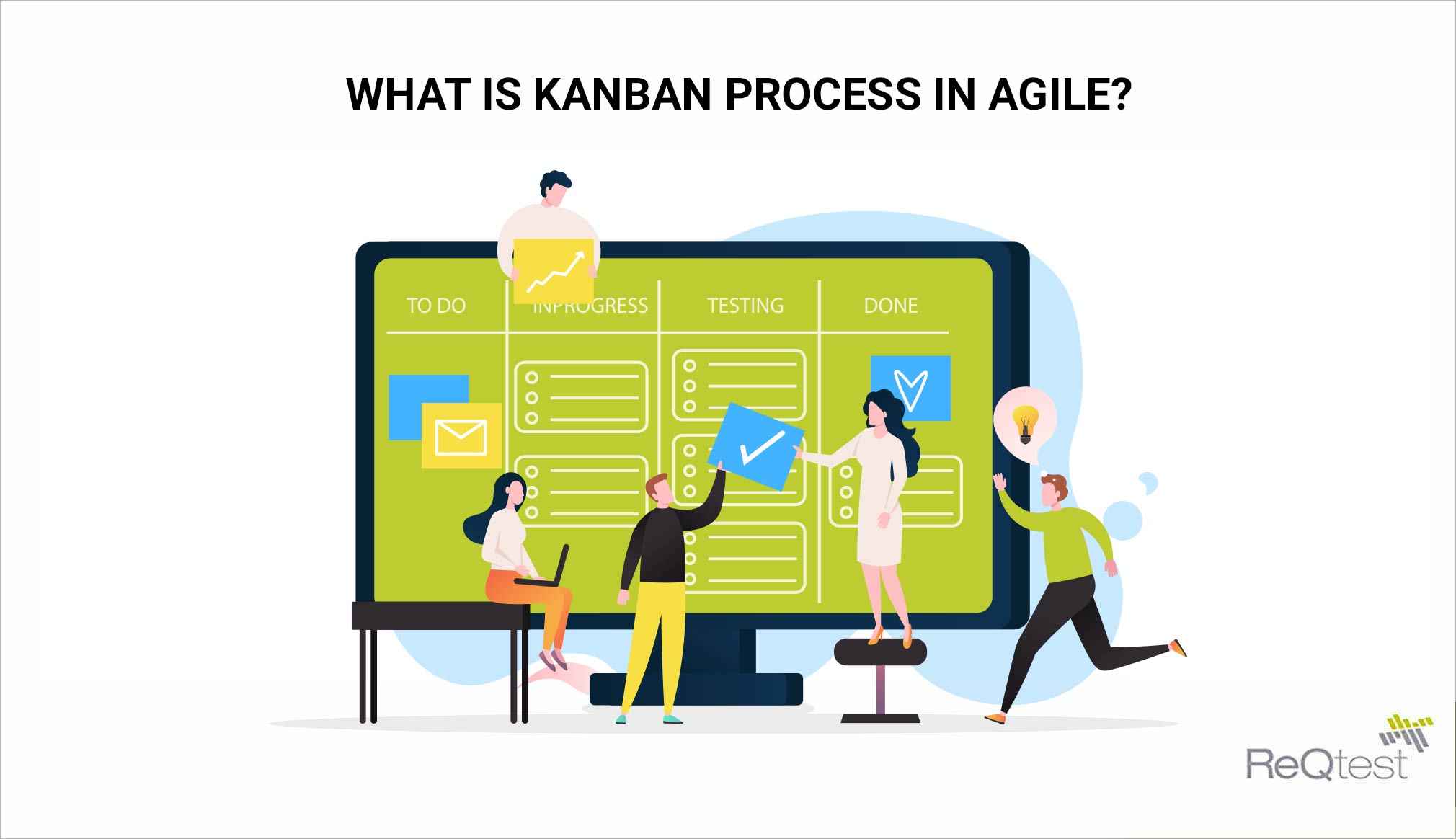July 6, 2020
What Is Kanban Process In Agile?
When doing software development in Agile, using a visual process management system can be a very good idea. This is where you would use Kanban. Anyone struggling to manage and balance their work across human systems will benefit greatly from this form of agile methodology.
Software development can have many different moving parts, and keeping on track with each process can be a real challenge. Kanban takes a lean approach to this – this aims to create more value with less work and expense.
Let’s explore the Kanban approach, and how you can use this method to help smooth out, organize, and optimize your development workflow.
What Is Kanban?
Kanban is a scheduling system for processes in lean development. This is a Just-in-Time (JIT) approach, meaning that work or functions are done as they are required. In short, Kanban aims to make sure that just the right amount of inventory required in a process is created at the start. This helps to guide processes, as well as make sure that the development team carries out operations with maximum efficiency.

Kanban is an agile methodology. Other processes, such as Scrum, will mimic a project lifecycle on a small scale. Each iteration in this system will have a clearly defined beginning and endpoint. Instead of these short iterations, Kanban uses one large development cycle to develop the software.
The process of Kanban uses “cards” (called Kanban) which move from the start of the process to the finish. The constant flow of Kanban means that there is a steady, linear flow of processes.
These cards represent the different features, or steps, in the process. This allows for a steady relationship between the features entering the process, and the ones being completed. Using cards like this helps to easily control and manage the flow of features in the development process.
A Kanban process has no clearly defined beginning and end. Rather, the different processes start and finish independently after each other.
Kanban projects also have limits on their capacity. These are called Work In Progress (WIP) limits, which aim to keep the development team working on smaller, specific tasks at a time. As the team completes these tasks, the Kanban process then brings new ones into the project.
Benefits Of Kanban In Agile Methodology
The Kanban method aims to manage and improve workflow in development. This is achieved by designing a specific flow of work in the project.
When working in Agile methodology, Kanban can help you to achieve tasks with greater efficiency. Visualizing the workflow with Kanban cards and limiting the capacity of tasks through WIP do this. Doing this will help the development team to complete tasks faster, without leaving any unfinished.
Using Kanban helps to promote several different values to the development team. As they adopt the process, they will focus on transparency, collaboration, and the linear flow of work. It also promotes a greater sense of balance of perspectives and capabilities, as the whole team focuses solely on shorter tasks without other distractions.
Other values that Kanban can promote can include a stronger focus on the customer and their needs, leadership, a better understanding of the organization, improved collaboration, and a need for the team to reach agreements better.
Not only does Kanban work to maximize the flow and efficiency of the work, but it can also help the team to work better and smarter together.
Principles Of Kanban
Kanban is all about getting things done without any wasted time or resources. When looking at the Kanban approach, there are four core principles to follow.
- Start With What You Know
Kanban is incredibly versatile and easy to introduce to all kinds of different organizations. Whatever workflow or system you may already work on, you can place Kanban over it to help optimize the process. This is a non-disruptive process that can help to highlight any issues and find the best solution going forward.
This means that Kanban is easy to implement into any project, and you won’t need to go back to the start to make major changes.
- Encourages Continuous Small Changes
Kanban is not about major portions of evolution in the project or sweeping changes. Instead, this process focuses on many small sections of continuous, evolutionary change.
The aim of this is to promote a stronger sense of dedication to each portion of work. It also helps to avoid resistance during the different phases of the development.
- Focus On The Current Process
When working with the Kanban process in agile, it teaches you to focus on the present existing scenario. Kanban avoids looking far ahead or regressing. Instead, it encourages developers to work logically and thoughtfully on the current process.
- Strengthens Teamwork And Leadership
Following the Kanban method encourages leadership at all levels. Everyone can participate, focus completely, and strive for improvement.
This principle of Kanban makes it an ideal tool for teamwork, as it can help to strengthen the team’s skills, as well as foster a stronger mindset of teamwork. Kanban is a process that works for all levels – not only management.
Kanban Practices
For the best streamlined, lean system, Kanban also implements six core practices. It is important to follow these, along with the four key principles. The practices are listed below:
- Visualize your work
- Limit the work in progress
- Manage the workflow and decrease the lead-time
- Be clear about the process, the policies, and principles behind it
- Implement feedback loops
- Improve collaboratively, evolve experimentally
Conclusion
Kanban is a system that focuses on present processes, encourages teamwork, and optimizes each step. This is a smart option for anyone working in agile, as it offers an efficient lean approach to managing flow.
Share article